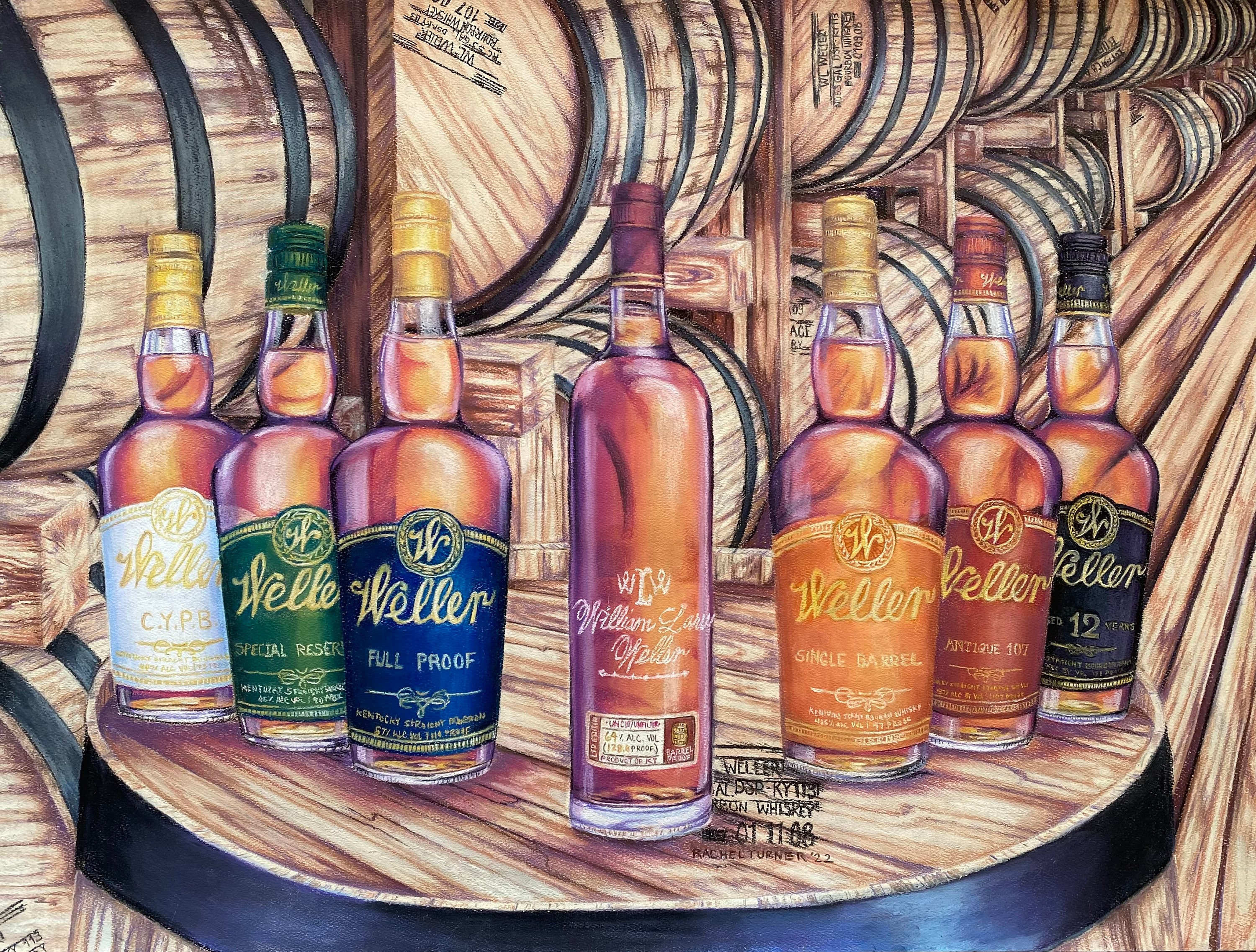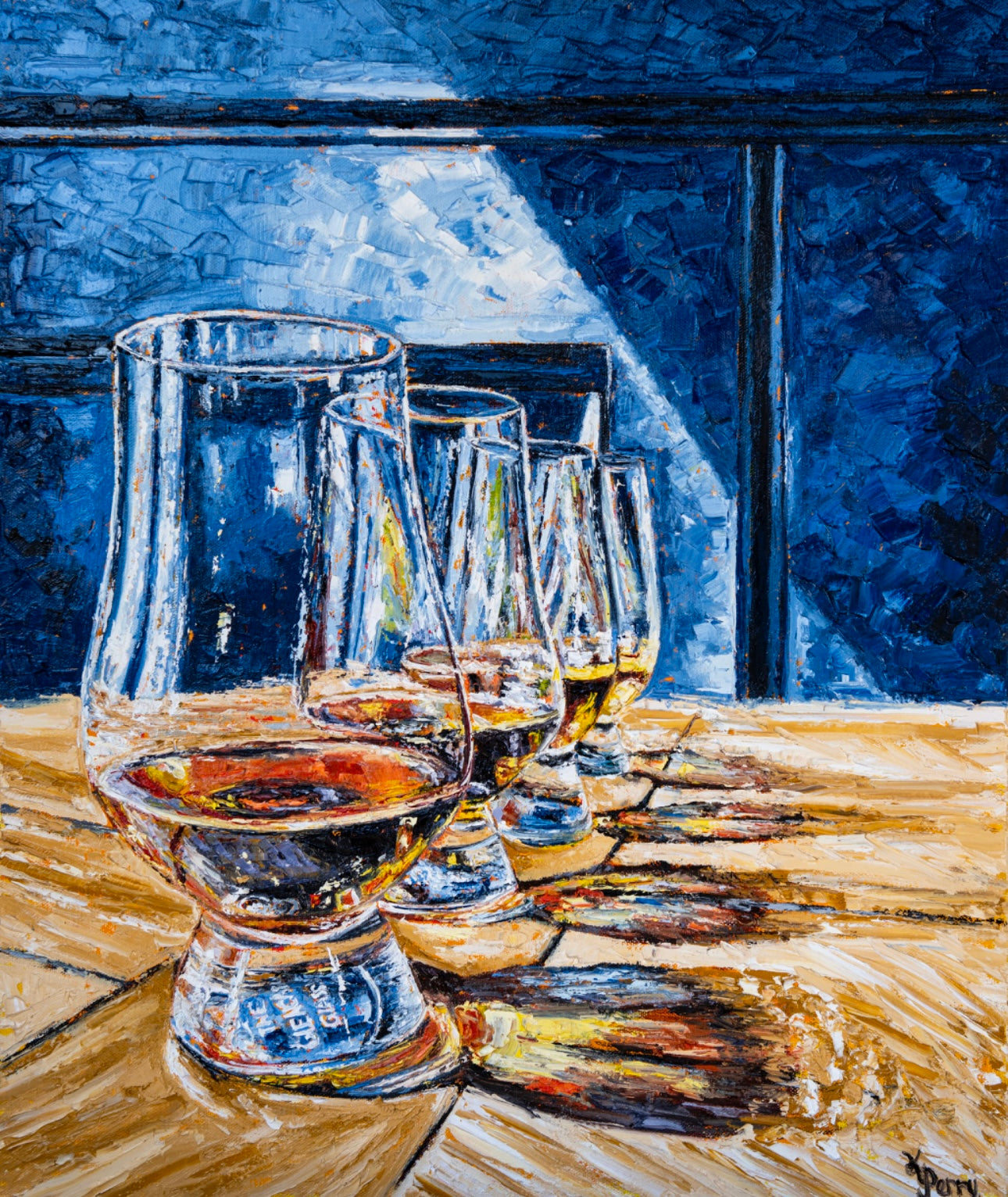Revealing the Beauty of Bourbon Art: A Homage to Craft Distillers
Revealing the Beauty of Bourbon Art: A Homage to Craft Distillers
Blog Article
The Importance of Whiskey Art in Celebrating Heritage and Craftsmanship in the Beverage Industry
The elaborate connection in between bourbon art and the celebration of heritage and workmanship within the drink industry can not be overstated. Through thoughtfully designed bottles and labels, scotch brands envelop their historic roots and the artisanal abilities that define their production methods.
The Historical Origins of Whiskey
At the heart of bourbon's allure lies a rich tapestry of historical roots that map back to old people. The origins of bourbon can be connected to the distillation methods of the Sumerians and Babylonians around 2000 BCE, where early kinds of fermented grain drinks started to arise. However, it remained in the Middle Ages that the art of distillation progressed considerably, particularly in Ireland and Scotland, leading to the creation of scotch as we understand it today.
The term "whiskey" itself acquires from the Gaelic word "uisce beatha," suggesting "water of life." This expression underscores the cultural significance of whiskey in Celtic cultures, where it was often linked with routines, parties, and common bonding. By the 15th century, distillation became an identified craft within monastic areas, leading the way for the establishment of lawful distilleries.
As profession paths broadened, whiskey's popularity expanded, going beyond local borders and catching the passion of lovers worldwide. Limited Edition. This historic trip mirrors not only the craftsmanship behind scotch manufacturing yet likewise its integral role in social and social contexts, marking it as a substantial beverage throughout history
Artistic Expression in Branding
Whiskey branding stands as an engaging intersection of virtuosity and commerce, where visual identification plays an important function fit consumer assumption. The looks of whiskey labels, packaging, and marketing products show not only the brand name's tale but also its core worths and heritage. Through creative expression, distilleries convey a narrative that resonates with customers, stimulating emotions and stimulating links.
Making use of color, typography, and imagery in branding serves to distinguish products in a saturated market. For example, conventional themes may evoke a feeling of authenticity and workmanship, while modern designs can symbolize development and forward-thinking. This calculated creative direction enhances brand name acknowledgment and commitment, permitting customers to build an individual connection with the scotch they select.
Moreover, creative expression in branding usually works as a party of regional heritage. Distilleries frequently incorporate local symbols or historical recommendations into their layouts, producing a sense of location that invites customers to engage in a wider social experience. Inevitably, the virtuosity behind whiskey branding not just boosts visual allure yet likewise improves the general narrative of the brand name, cultivating a deeper gratitude for the craftsmanship and heritage ingrained in each container.
Craftsmanship in Container Design
The virtuosity obvious in scotch branding prolongs beyond aesthetic identification to encompass the craftsmanship included in container design. Each bottle offers as a vessel not just for the spirit within, yet also for the tale it outlines its high quality, beginning, and tradition. The style process needs careful attention to information, as aspects such as product, shape, and closure contribute considerably to the total understanding of the bourbon.
Craftsmanship in container layout includes selecting high-grade glass that can boost the bourbon's color and clearness, while likewise giving a tactile experience for the customer. The silhouette of the bottle need to be both practical and cosmetically appealing, typically mirroring the heritage of the brand name. Several distilleries choose distinct forms or embossed logos that stimulate a sense of authenticity and history.
Moreover, the label style and typography play an essential function in communicating the brand's story. Bourbon Art. A well-crafted bottle not only mesmerizes the consumer's eye but likewise strengthens the brand name's dedication to high quality and tradition. In this method, the workmanship of container style ends up being a crucial element of the scotch experience, combining creativity with a profound regard for heritage
Cultural Relevance of Scotch Art
Commemorating tradition and workmanship, the cultural value of bourbon art transcends mere appearances, intertwining with the historical and social stories of the regions from which it originates. Each bottle functions as a canvas, depicting the one-of-a-kind stories, mythology, and traditions that have formed neighborhood whiskey-making practices. The elaborate designs often reflect the heritage of the distillers, integrating icons and themes that resonate with the society and worths of their communities.

On top of that, bourbon art plays a vital role in communal celebrations and celebrations, serving as a substantial web link in between people and their shared experiences. By valuing the virtuosity in whiskey product you could look here packaging, customers grow a much deeper understanding and regard for the craft, ultimately improving their enjoyment of the drink itself.
Modern Trends in Bourbon Presentation
Recently, the presentation of bourbon has actually developed to reflect contemporary tastes and trends while still honoring traditional craftsmanship - Realism Art. Distilleries are significantly concentrating on visual elements that improve the overall alcohol consumption experience, bridging the gap in between heritage and modernity
Innovative container designs have actually emerged, usually including lasting products and creative labels that inform engaging stories. Several brand names now collaborate with regional artists, instilling their items with distinct visual expressions that reverberate with customers. Additionally, limited-edition releases are often packaged in collectible containers, including worth and allure for aficionados.

Verdict
In conclusion, whiskey art serves as an important avenue for revealing the heritage and craftsmanship fundamental in the beverage sector. Via detailed my response branding, cutting-edge bottle layouts, and culturally considerable artistic aspects, scotch brand names successfully honor their practices and link with customers.


Workmanship in container design entails selecting premium glass that can boost the scotch's shade and clearness, while also supplying a responsive experience for the consumer. In this method, the workmanship of bottle layout comes to be an essential facet of the scotch experience, merging creativity with an extensive regard for heritage.
In verdict, scotch art offers as a crucial conduit for expressing the heritage and workmanship fundamental in the drink market.
Report this page